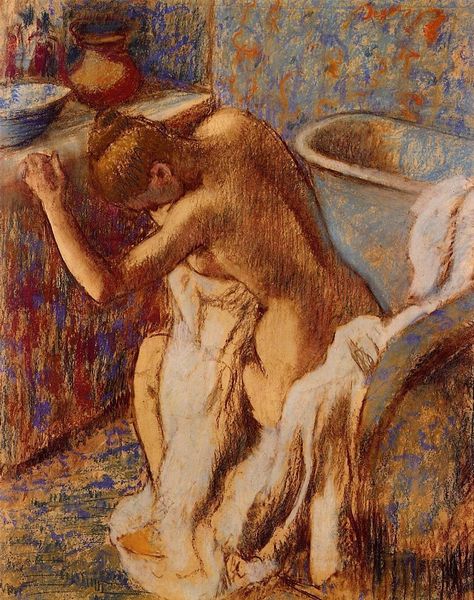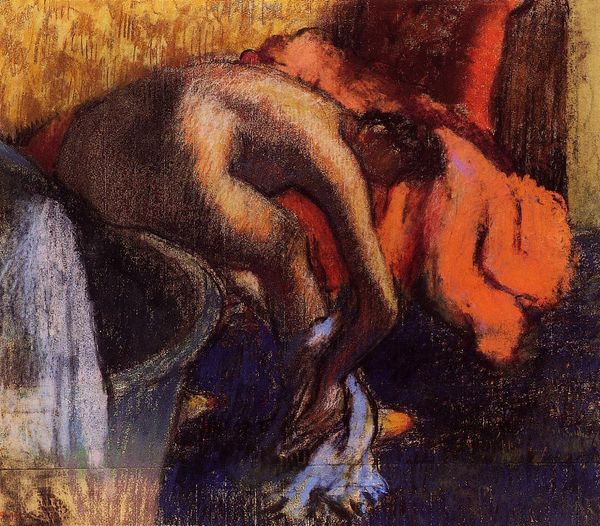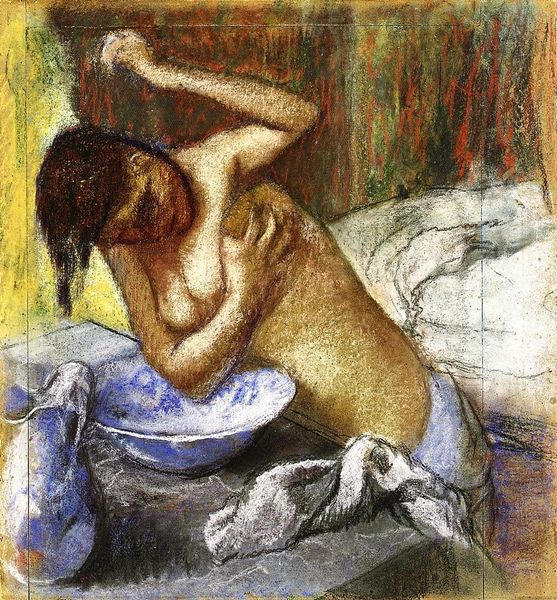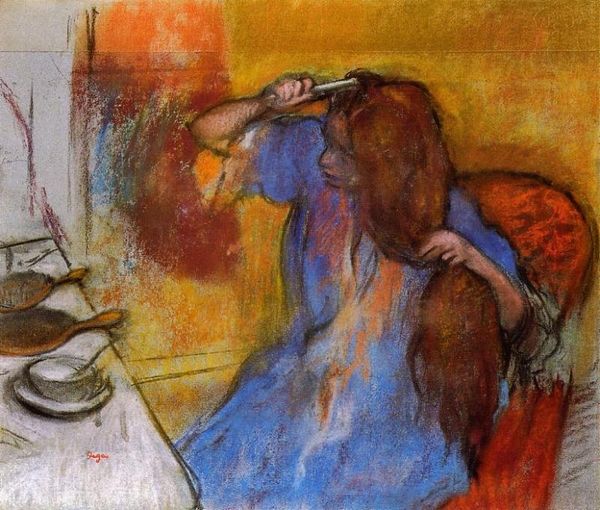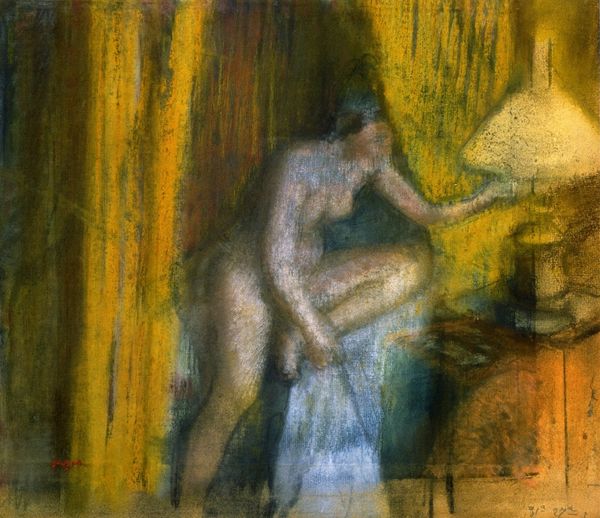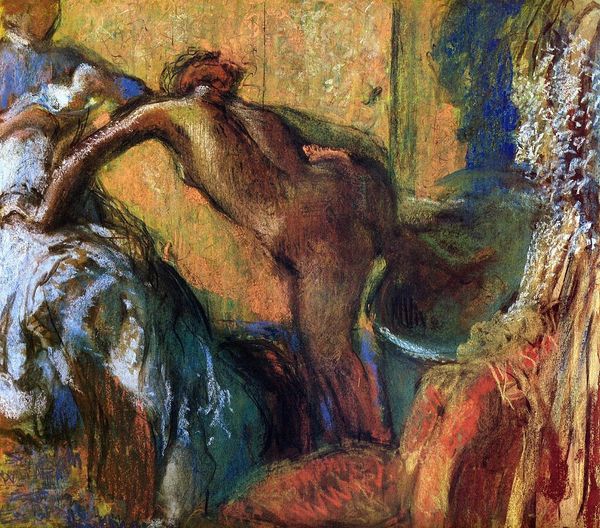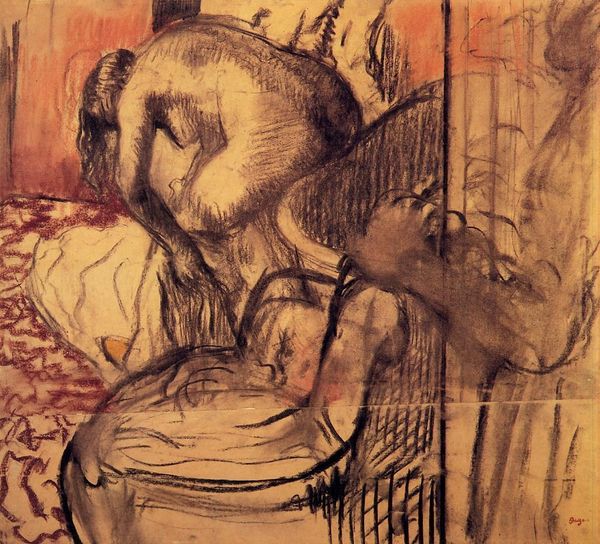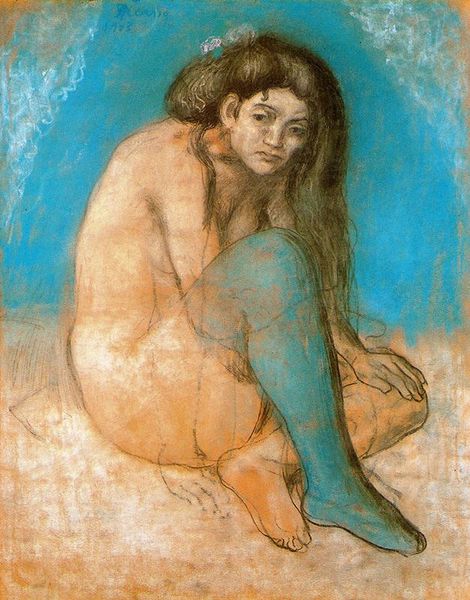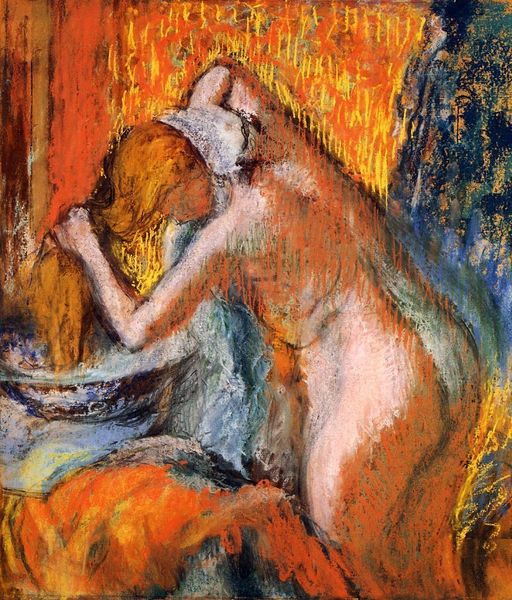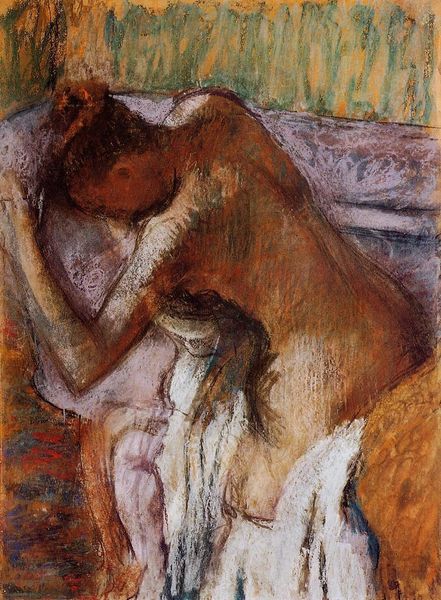
drawing, oil-paint, pastel
#
drawing
#
impressionism
#
oil-paint
#
oil painting
#
intimism
#
france
#
genre-painting
#
pastel
#
nude
Copyright: Public domain
Editor: This is "Woman in the Tub" by Edgar Degas, created around 1884, using pastel and charcoal. I'm immediately struck by the intimacy of the scene, but there’s also a strange detachment… What do you make of this work? Curator: The detached intimacy you observe is key. Degas was fascinated by capturing fleeting moments, and the bath became a recurring symbol. Consider how water itself, present yet invisible here in the tub, often represents purification, rebirth. Editor: Rebirth? That’s interesting, because the woman's pose seems more about vulnerability than renewal to me. Curator: True, and vulnerability is often paired with purification. But look also at the pitcher – a symbol of domesticity and perhaps even fertility. And the towel evokes both privacy and exposure. These elements are carefully orchestrated, like actors on a stage. It makes you wonder about what's hidden, doesn't it? Degas' art often speaks to social constructions of femininity. Editor: Absolutely, and it seems those themes still resonate strongly today. Curator: Yes, symbols and themes can endure across eras. They may shift in meaning slightly, but the underlying emotional power persists. A painting like this is both a window into a specific time and a mirror reflecting our own cultural assumptions. Editor: I see that much clearer now. Thanks, this has given me a new appreciation for Degas' work!
Comments
No comments
Be the first to comment and join the conversation on the ultimate creative platform.

